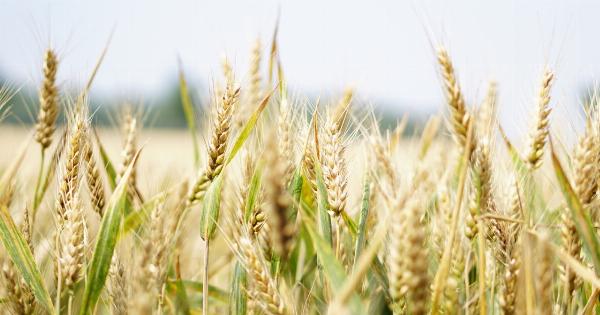Breakfast is often considered the most important meal of the day, providing fuel and energy for the morning ahead.
Toast is a common and quick option to start your day, but have you ever wondered what happens to the leftovers? Instead of throwing them away, there are several innovative and sustainable ways to repurpose your uneaten toast. In this article, we will explore creative uses for leftover toast, as well as the importance of watering plants and tips for effective plant care.
Repurposing leftover toast
1. Bread crumbs: Instead of store-bought bread crumbs, you can make your own using leftover toast. Simply toast the bread until it is brown and crispy, then blend it in a food processor until you have fine crumbs.
These breadcrumbs can be used to coat chicken, fish, or even as a topping for casseroles.
2. Croutons: Cut the leftover toast into small, bite-sized pieces and toss them with your favorite seasonings. Bake them in the oven until they are crispy, and voila! You have homemade croutons to add a crunch to your salads or soups.
3. French toast: If you prefer a sweeter option, use the leftover toast to make French toast. Dip the bread in a mixture of eggs, milk, and your preferred spices, then fry it in a pan until golden brown.
Serve it with syrup, fresh fruit, or a dusting of powdered sugar for a delightful breakfast or brunch treat.
4. Bread pudding: Transform your leftover toast into a decadent dessert by making bread pudding. Tear the toast into pieces and soak them in a mixture of milk, eggs, sugar, and spices.
Bake it in the oven until it sets, and enjoy a warm and comforting dessert.
5. Stuffing: If you love the flavors of Thanksgiving, use your leftover toast to make stuffing. Tear the bread into small pieces and mix it with sautéed onions, celery, herbs, and broth.
Bake it in the oven until it is golden and crispy, and serve it as a side dish for a delicious meal.
The importance of watering plants
Plants are living organisms that require water to survive and thrive. Water is essential for several crucial functions within a plant, such as photosynthesis, nutrient transportation, and maintaining the turgor pressure that keeps the plant upright.
Without an adequate water supply, plants can wilt, become stressed, and eventually die.
Water plays a vital role in the process of photosynthesis, where plants convert sunlight into energy.
During this process, water is absorbed through the roots and transported to the leaves, where it combines with carbon dioxide to produce glucose and oxygen. Without enough water, the plant’s ability to carry out photosynthesis is hindered, leading to stunted growth and reduced vitality.
Water is also responsible for transporting nutrients from the soil to different parts of the plant. Through a process called transpiration, water moves up from the roots to the leaves, carrying essential minerals along with it.
These nutrients are crucial for the plant’s overall health and development. Without a sufficient water supply, the plant cannot take up these nutrients effectively, leading to nutrient deficiencies and impaired growth.
In addition to these physiological functions, water is crucial for maintaining the turgor pressure within plant cells. Turgor pressure is the pressure exerted on the cell walls, which helps keep the plant upright and firm.
When a plant doesn’t receive enough water, its cells lose turgor pressure, causing the leaves and stems to droop and wilt.
Proper watering practices are essential to ensure the health and vitality of your plants. Here are some tips to help you water your plants effectively:.
1. Understand your plant’s water requirements
Not all plants have the same water requirements. Some plants, like succulents, prefer dry and well-drained soil, while others, such as tropical plants, thrive in moist conditions.
Research the specific water needs of each plant in your garden to provide optimal care.
2. Water at the right time
Water your plants early in the morning or late in the evening when temperatures are cooler. This allows the water to penetrate the soil and be absorbed by the roots before evaporation occurs.
Watering during the heat of the day can lead to water loss through evaporation and potentially cause sunburn on plant foliage.
3. Water deeply and infrequently
Instead of light and frequent watering, aim to water your plants deeply. This encourages the roots to grow deeper into the soil, making the plant more resilient and better able to withstand drought conditions.
Infrequent deep watering also prevents shallow root development, which can make plants more susceptible to water stress.
4. Use the right watering technique
Avoid overhead watering, such as sprinklers, as it can lead to water wastage and promote the growth of fungal diseases. It is best to water at the base of the plants, directing the water towards the root zone.
This allows for efficient water uptake and reduces the risk of fungal infections.
5. Mulch to retain moisture
Apply a layer of organic mulch, such as bark chips or straw, around your plants. This helps to retain moisture in the soil, preventing water evaporation and reducing the need for frequent watering.
Mulching also suppresses weed growth, keeping your plants healthy and free from competition.
By following these watering tips and providing your plants with the right amount of water, you can ensure their health and vitality.































